
Friends of Branded!
Happy Saturday and I hope everyone had a great week!
Let me address the title of this week’s edition of the Hospitality Headline right out of the gate. Ghost Kitchens (“GKs”), is the single naming convention I will use as a catch-all for Dark Kitchens, Delivery-only Kitchens, Cloud Kitchens, Virtual Restaurants, and other venues that exclusively for delivery & takeout, are NOT dead!
There’s been so much attention in our industry about the issues surrounding the Ghost Kitchen segment of the market and much of the recent news comes specifically as a result of the acquisition by Mr. Sam Nazarian of NextBite and now the apparent parting of ways between our friends at Virtual Dining Concepts (“VDC”) and Jimmy Donaldson (aka: Mr. Beast). I want to use this Top of the Fold section to share my own thoughts on all of this.
Before I dive into it, here’s a link from our friends and partners at Ovation - Ghost Kitchens on this segment of the market.
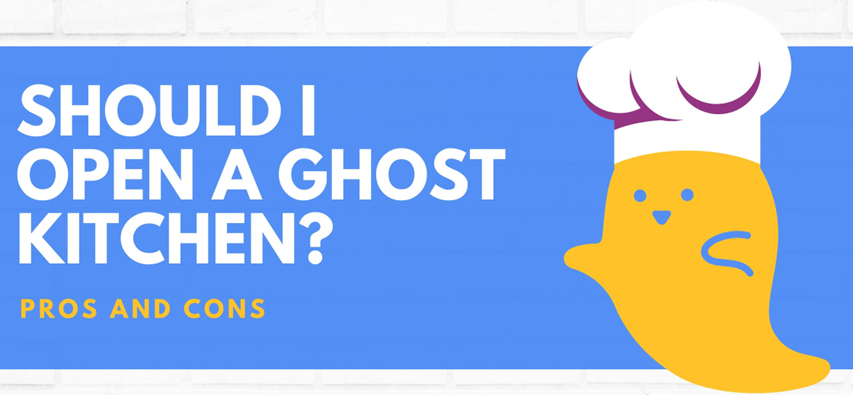
Now, please allow me to explain the genesis of the title of this week’s edition, which is adapted from the 1995 film “Things to Do in Denver When You're Dead.” In the category of TMI (too much information), this film was produced on a budget of $8mm and only made about $500k upon its limited release at the box office.
Rotten Tomatoes gave this film a rating of 34% (meaning: not very good).
I particularly liked and respected what Mr. Roger Ebert wrote about this film: “On balance, I think it’s an interest miss, but a movie you might enjoy if (a) you don’t expect a masterpiece, and (b) you like the dialogue in Quentin Tarantino movies.” Fair enough, Mr. Ebert, fair enough
Despite the negative reviews, scores, and lack of any apparent financial success, I REALLY liked this movie. Maybe it’s b/c I love crime dramas, maybe it’s b/c the lead character is named “Jimmy the Saint” (which comes from a Bruce Springsteen song – “Lost in the Flood” on his debut album, Greetings from Asbury Park, NJ in 1973) or b/c the title itself comes from a Warren Zevon song of the same name (Warren’s most famous compositions were “Werewolves of London,” “Lawyers, Guns and Money,” and “Roland the Headlines Thompson Gunner,” which all came from his third album, Excitable Boy in 1978).
Regardless, of any of the above, I want to be clear, I liked this film, and I will tell you it has an amazing cast and I love the idea of what one can do when they’re told they’re dead (or in the process of dying). Maybe that’s why I love the song by Tim McGraw, ”Live Like You Were Dying,” so very much.

But I digress (as usual).
While I know we all want to move on from the pandemic, there are a number of habits that we’ve embraced and continue to be key parts of our lives. The importance and presence of Zoom, along with other video calling platforms (come on Microsoft Teams, I’m cheering for you, but I need you to raise your game), and the utilization of QR Codes, are most certainly here to stay.
Please note, QR Codes were developed in 1994 by the Japanese corporation Denso Wave – a division of Denso Corporation, which is a subsidiary of the Toyota Moto Corporation to track automobile parts during the assembly process. The QR in the name stands for “quick response,” expressing the development concept for the code, whose focus was placed on high-speed reading.
Peloton (Interactive) certainly saw massive growth of its company because of the pandemic and while the stock price has come way down, I don’t expect the importance of home & office “gyms” and specifically the streaming of fitness classes to go away. I also continue to hear a great deal of love & loyalty to Peloton and its amazing instructors (I see you Jenn Sherman, the OG!).
My point is, for lack of a better cliché, let’s not throw the baby out with the bathwater.
With respect to Ghost Kitchens, first, it was always expected that as the pandemic subsided, there would be a return to in-person dining which would come at the expense of off-premise dining. Why? You know why. People missed dining out and there has been and always will be joy in people breaking bread together in restaurants. It’s also not lost on me that as a result of inflation and specifically the increases in grocery prices, that dining out is now not only fun, but also a competitive option to dining at home. QSRs (quick service restaurants) are in high demand and dining traffic at this segment of the industry has returned to pre-pandemic levels.
Second, Ghost Kitchens, are, and will remain, an important part of the hospitality industry. Please note, I choose (as often as I can) my words with a great deal of intentionality. I wrote Ghost Kitchens will remain an important part of the industry. Like the product Hamburger Helper, which was designed to be cooked with ground beef and was NEVER intended to replace ground beef (as suggested in the 1983 film Vacation by Randy Quaid as Cousin Eddie), GKs need to be embraced as part of the restaurant industry, not as a replacement for it!

When Schatz and I attended our very first Ghost Kitchen conference back in 2021, what surprised us the most was the idea that Ghost Kitchens were in fact somehow being presented as technology companies as opposed to restaurants. Everything we saw and understood about Ghost Kitchens made it clear that they were akin and a variation of a franchise, but one where guests would order from for delivery or takeout only.
Of course, these are tech-enabled businesses, exactly as franchise restaurants are and the industry overall is moving towards. What we felt was lacking at the GK conference (just one person’s opinion) was the focus on quality, consistency, and the value these types of restaurants would deliver (pun intended) for the guests. I like to point out that no matter where in the world you go, if you order a Big Mac, it’s going to taste the same. Friends, that’s a REALLY HARD THING TO DO and make happen consistently.
What was missing most at this GK conference? Restaurant operators!
While Branded is obsessed with investing in emerging technology & innovation that will support and help operators improve margins, efficiencies and engagement with THEIR guests, we’re also operators at heart and have a portfolio of restaurants in NYC.
We understand and have built an investment platform around the idea that our industry needs to embrace technology & innovation. This embracement is absolutely happening. What will NOT happen in our industry is that the food itself won’t matter. We’ve heard things to the contrary, like “speed” is all that matters, or “convenience” is now the most important thing. Speed and convenience are “nice to haves,” but what our guests require, more than anything else, is VALUE and that’s not about being expensive or cheap, but rather about satisfying our guests and exceeding or at the very least, meeting their expectations.
Why do I think Ghost Kitchens are here to stay? I think about a lecture my mom went to many years ago at the 92nd Street Y. She went to listen to a younger, but absolutely recognized industry leading restauranteur, Danny Meyer. A question from the audience was asked about the price of a bowl of pasta at one of Mr. Meyer’s restaurants. If I remember the story correctly, the lecture attendee asked Danny how he could charge $16 for a bowl of pasta that probably cost him only a few dollars to produce.
My mom came home from the lecture and told me the story and exchange between Danny and the attendee. She said it was Mr. Meyer’s response that she found so interesting. Danny responded by saying that the bowl of pasta actually cost him probably far less than the amount of money the questioner had assumed it did for his restaurant to produce, but the bowl of pasta was NOT what he believed his guest was paying for. He went on to say the guest was paying for the entire experience of dining at his restaurant. That of course included the staff he hired, trained and invested in, the flatware, glassware, carpeting, drapes, and everything that went into making the act of eating that bowl of pasta an experience that the guest would enjoy.
I’ve always loved that story and that my mom knew my love of this industry and came home to share it with me.
So what does Danny Meyer’s $16 bowl of pasta have to do with Ghost Kitchens? Well, if the restauranteur is NOT paying for flatware, carpeting, drapes and the staff that's needed to greet, seat and deliver a successful in-person experience, how much value can they create for BOTH the operator and guest in a delivery or takeout only experience? What can the operator do to make the delivery or takeout experience exceed expectations and create great value?
That’s what’s always intrigued me about Ghost Kitchens. If we remove a great deal of overhead from the equation, can we create value for our guests to this dining experience. I think the answer is absolutely “yes” and that represents a most important objective, b/c off-premise is not only here to stay, but it’s going to become only more important.
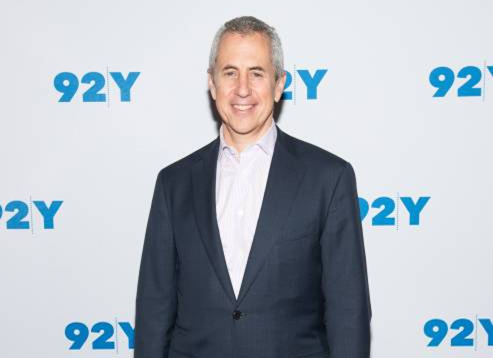
You know what doesn’t exist anymore? Sewing rooms! Are home kitchens going to experience the same fate that the sewing room experienced? No, I don’t think so, but please note, there was a point in the last century when a sewing machine could be found in nearly EVERY single US household.
The value that Ghost Kitchens present is tremendous, and that includes a real estate play (the utilization of less desirable retail spaces), an optimization strategy by utilizing EXISTING kitchen capacity when it would otherwise sit idle, a test-before-you-REALLY-invest strategy as a result of the lower cost to entry and the opportunity to try new concepts without the full investment in a brick & mortar venues (food trucks was prolific in the area of “testing” concepts before investing in brick & mortar). GKs also offer the opportunity for restaurants to engage in a potentially more unique & curated way with guests. Stealing once again from my young daughter’s kindergarten experience, restaurants can meet the guests where they’re at.
Like most “hot” sectors of almost any market and particularly ones undergoing a most meaningful transformation, the pendulum can move too violently in either direction. In the case of Ghost Kitchens Version 1.0, this part of the hospitality industry grew faster than the industry could manage, and this includes the quality, consistency, transparency and value that our guests expected and essentially required.
Will GK Version 2.0 be better? The answer is a resounding yes, but like all innovations, it will take some time to fine tune and develop the foundation on which this segment of the industry will be built on and enabled to grow and succeed on.
If you’re betting against Ghost Kitchens, I’ll take the other side of that wager. However, rather than looking at GKs as a “win or lose,” “yes or no,” scenario, let's think of them as just another slice (pun intended) that comprises the pie in terms of the many ways guests want to eat and dine. From that perspective, its hard for me to see how GKs are anything other than an important segment of our industry and I for one will be working with emerging tech, innovation and restaurant brands, that see delivery & takeout options as table stakes in meeting the expectations and needs of our guests.
Was Star Tek II (The Wrath of Khan) better than the first Star Tek movie? You know the answer! Version 2.0 of GKs will exceed Version 1.0 and this segment of the market will continue to secure its place in our industry. I guaranty it!
As always, there’s a great deal to cover below, so let’s get after it!
It takes a village.


MARKET COMMENTARY

As a native New Yorker, this article by Jennifer Gould caught my attention for several reasons.
First, I used to be a nightrider, and that included a few years as a bartender who was required to keep our doors open to 4am EVERY night of the week (even if we didn’t have a single person in the joint). My boss believed that nightriders wouldn’t risk having to guess whether a venue was still open. You either committed to being a late-night joint or you weren’t. We kept our doors open to 4am and over a relatively short amount of time, we developed quite a late-night crowd.
With the statute of limitations now well behind me, I’ll admit that keeping the bar opened until 4am, usually meant that our guests stayed until well past 5am. We became a place industry folks went to after they finished their respective shift (and that’s as fun a crew to hang with in the early hours of the morning of any I’ve ever seen).
Away from own experiences, late night and specifically 24-hour dining was far more common a few years ago than it is today. The article highlights the key reasons for the decline in 24-hour joints being attributed to the demand-side of the equation. It talks about how people are now going out earlier as well as safety issues associated with taking the subway late at night as a reason for the decline in nightriding. It also sites the move of many clubs to Brooklyn as contributing to the decline in the NYC 24-hour culture.
I think one thing the article may have underweighted is the supply-side of the equation. Having partners and a large network of operators throughout the industry, it’s not lost on me that staffing all night shifts has NEVER been harder. Labor, in general, is a top 2 issue for the restaurant industry and covering the overnight shift is incredibly challenging. If you can’t staff the shift, you can’t be open.
Challenging this trend and refusing to believe that Manhattan has lost its light-night edge is friend of Branded, Stratis Morfogen. The article mentions Stratis and how he’s not buying into the theory that Manhattan has lost its late-night edge. Stratis just signed a lease and is taking over the iconic Lyric Diner and will be launching Diner24.
Mr. Morfogen, I look forward to seeing you at Diner24 in the early morning hours, but please note, I will be visiting your joint on my way to work as opposed to coming home from the clubs. Things change and so has my time as a nightrider. 😊
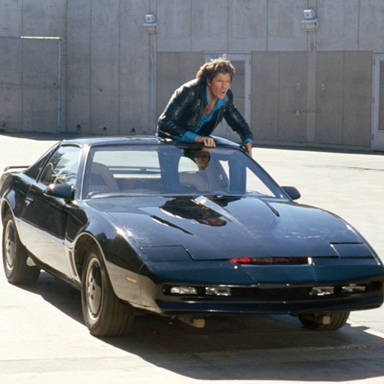

Oh, look here! An article that features Branded’s friends and partners at Humanly.io and their closing a most successful Series A round! 😊
I shared a few weeks ago that there was more positive news to come from Branded’s portfolio companies and Humanly.io is the latest one I can now write about and the success this tremendous operator-centric company is having.
Readers of the Hospitality Headline know that Labor is a most meaningful headwind for our industry and Humanly.io provides artificial intelligence powered chat that handles many of the tasks associated with recruitment and hiring such as screening, scheduling and the ever-important re-engagement with prospects and candidates.
Like so many of Branded’s portfolio companies, the leadership team at Humanly.io is a strong and cohesive group and is comprised of co-founders Prem Kumar, Andrew Gardner, and Bryan Leptich. This emerging tech company’s goal is to automate the often-mundane tasks for human resources personnel so that they can focus on building deeper connections with candidates.
One of the things I love about Humanly.io that often goes unnoticed by folks looking at Branded’s portfolio, is how many of emerging tech companies are NOT exclusively focused on the foodservice and hospitality industry. Branded might look at these companies through the lens of a restaurant operator, but I get most excited when I see a tech company that addresses the most pressing and important issues facing the hospitality industry, as well as the issues of other industries!
Labor is a most critical headwind and I dare say challenge for the hospitality industry, but we haven’t corned the market on labor issues. Retail, Health Services, Construction, Professional Services and so many other industries are being negatively impacted by the labor shortage.
Humanly.io is a solution to streamline and make the recruitment and retention process more efficient. That’s good for so many industries, including the hospitality industry. As a stakeholder in Humanly.io, the breadth and depth of their platform is good for the investors that embraced the importance of making the recruitment and interview process more efficient and equitable. Humanly.io is a strong run and the entire Branded Team wants to congratulate them on their reaching this important milestone.

QUIZ

What was the first 3 Michelin Star restaurant?
Answer revealed at the end of the newsletter!
BUSINESS
The Resilience of the Restaurant Industry: Thriving Amidst Ongoing Inflation
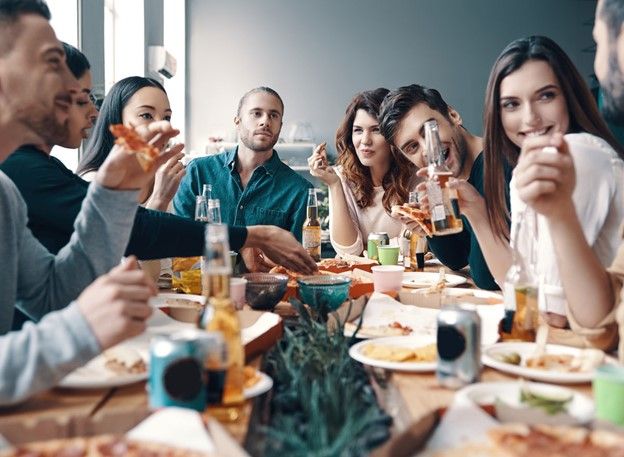
In last week’s edition I explained my thoughts on the good, the bad and the otherwise. Today I want to point on the bad, but the mostly good, of the Paradoxical Inflation Commodity as it relates to dining out.
This recent article published by The Wall Street Journal that I am sharing today sheds light on the persistent nature of inflation across the globe. (The Bad) However, while inflation presents challenges to various sectors, one industry that continues to flourish despite these economic headwinds is the restaurant industry. This story also highlights the resilience and adaptability of restaurants, as people continue to enjoy dining out despite inflationary pressures. (The good) Let’s focus on the good for a bit longer…
Continued Demand for Dining Out:
Despite the global phenomenon of inflation, people's love for dining out remains steadfast. The article acknowledges the persistence of inflationary forces, which have impacted the prices of commodities, ingredients, and labor costs for restaurants. However, it is crucial to recognize that this hasn't deterred individuals from visiting their favorite restaurants and exploring new culinary experiences.
Innovation and Creativity:
Restaurants have shown remarkable resilience by embracing innovation and finding creative solutions to navigate the challenges posed by inflation. In response to rising costs, many restaurants have revamped their menus, reevaluated their supply chains, and adopted new technologies to streamline operations and control expenses. (Cue several Branded’s Portfolio Companies) These adaptations have allowed them to continue providing exceptional dining experiences while managing inflationary pressures.
Creative Pricing and Value Offerings:
Restaurants have become adept at providing value to their customers while navigating inflationary challenges. In response to rising ingredient costs, some establishments have adopted creative pricing strategies or introduced special offers to maintain affordability. This approach ensures that diners can continue to enjoy meals at their favorite restaurants without compromising their budgets.
While inflation continues to impact economies around the world, the restaurant industry has proven resilient and adaptable in the face of these challenges. Despite rising costs, people's unwavering desire to dine out has bolstered the industry, supported by innovative approaches, community engagement, creative pricing, and a focus on meeting changing consumer preferences. This positive narrative highlights the ability of restaurants to thrive amidst ongoing inflation, showcasing their enduring appeal and the enduring power of shared culinary experiences. You’ve heard me say it before, and I’ll say it again, one thing I do know is that you have to eat, but you don’t need to buy the shiny new car.
FINANCE & DEALS
Banyan Acquisition Corp. combining with Pinstripes in SPAC restaurant deal valued at $520 mln
For those of you who have attended any of Branded's Cocktails & Connections events, you know we love to entertain. First and foremost, we are an investment and advisory firm but what supports our business is our team of marketing experts that know the business of hospitality. No matter what conversations you have you won't leave any of our events complaining about the hospitality you received. Similarly, consumers continue to seek out new experiences from food, to games and most recently BOTH.
In the realm of consumer experiences, the demand for novelty continues to grow. Enter Eatertainment, combining food and games for a unique outing. Pinstripes embodies this concept, offering dining and gaming experiences that leave a lasting impression. With a projected 2024 revenue of about $185 million to $195 million and 13 venues the company is now going public through a SPAC. Yep, you read that correctly, a SPAC! I haven't heard that word in a long time. Remember in 2021 when the economy was flushed with cash and 330 special purpose acquisition companies raised nearly $105 billion in funding?
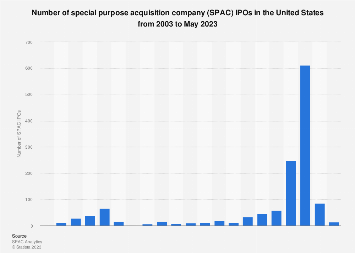
The SPAC frenzy fizzled out quickly but yesterday Banyan Acquisition Corp announced it agreed to combine with Pinstripe in a deal that values the combined company at $520M.
Restaurant Industry Movers in the Market
—Data as of 6/23/2023
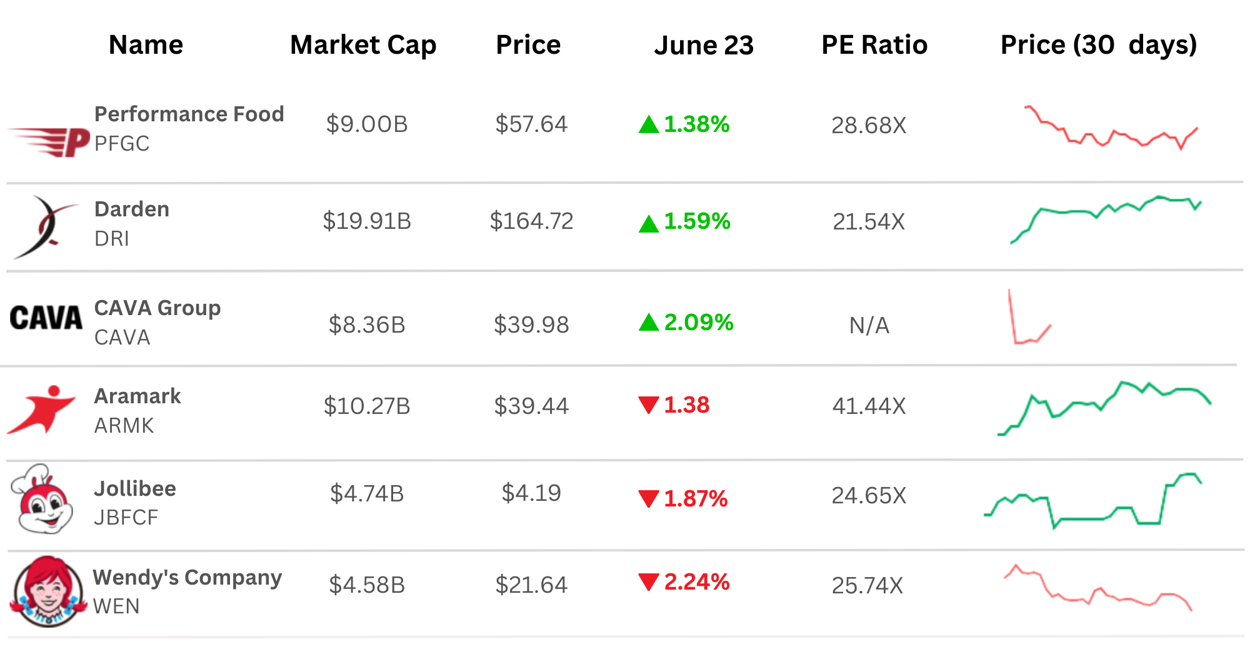
PODCAST
Hospitality Hangout

In the latest episode of Hospitality Hangout, broadcast from The National Restaurant Association Show in Chicago, hosts Michael Schatzberg “The Restaurant Guy”, Jimmy Frischling “The Finance Guy”, and special guest Sterling Douglass, Co-Founder & CEO of Chowly, interviewed Joe Donnelly, Group Director & Publisher of Informa’s Restaurant & Food Group. The discussion centered on Informa’s recent acquisition of Winsight, a company offering services in data, analytics, events, and content marketing for the foodservice industry.
Listen to the full episode on Spotify, Google Podcast, Apple Podcasts, or Amazon Music
IN THE NEWS
Hospitality Tech and F&B Innovation IN THE NEWS:
We love to highlight Food Service & Hospitality news, especially when it’s Partners & Friends making it!
- Leasecake: Partnered with David Energy
- MarginEdge: Named one of The Washington Post’s top workplaces in the DC area for third year in a row, recognized by DCA Live for being one of the Washington region’s fastest-growing and most exciting companies
- Mighty Quinn’s Barbecue: Entered as contestant for NRN’s Barbecue Showdown
- Minnow: Partnered with Granite Properties 3333 Lee Parkway office building
- Picnic: Partnered with MOTO Pizza
And in other News…please see some of the stories that caught our attention and that we’re paying attention to. This week was loaded with headlines and news!!
- Forbes: Food Tech Startup BetterBrand Notches Record $170 Million Valuation After Series A Funding
- Restaurant Business: At Culver's, Church's and Mooyah it's time for treats
- Restaurant Business: Restructuring gives control of Checkers to its lenders
- Nation's Restaurant News: New restaurant listings grew by 10% on Yelp in the past year
- TechCrunch: AWS launches $100M program to fund generative AI initiatives
- TechCrunch: Limble raises $58M at a $450M valuation to help orgs track and maintain ‘dumb’ physical assets
MARKETING
WHAT MAKES YOUR BRAND SPECIAL?
If I asked you what makes your brand special you might give an answer about your food, your service model, your location, etc. You wouldn't be necessarily wrong, but could you answer that same question the way your guests would?
Can you see your brand through the eyes of your guest .. and not just any guest, your most valuable guest? How about your guests with less frequency or lower spend? Do you even know who those people are?
We call them ICPs or ideal customer profile. If you said "our brand is for everyone," you're wrong. Even McDonald's, one of the biggest restaurant brands in the world, is not for everyone. They have a convenience shopper, they have a value shopper, they have foodies, they have people who only come for breakfast, etc. Most restaurant brands have 4-6 ICPs.
Knowing your ICPs helps you know what and how to market. Typically marketing to your top 2 ICPs will get you most of the distance. If you don't know what "she" cares about (That's how Solomon from 16 Handles describes their core ICP) then you can't be effective in speaking to them.
So how do you figure out who your ICPs are and what they care about? Well you could do what Condado Tacos did and hire an agency to do the research. Well what if you don't have the budget? Either path, check out this interview I recently did on the Restaurant Marketing Podcast with Condado Taco CMO Sara Kear. She walks through the entire thought process and strategy. She even shares what to do if you don't have the budget.
It's an incredible lesson and you're going to learn some strategies and tactics that will not only inform your marketing but increase your sales.
WHAT DOES REV DO?
*I help restaurants to build guest marketing programs.
*I help hospitality tech companies with lead generation and content marketing.
Need help?
Rev Ciancio
Branded Strategic, Head of Revenue Marketing
ANSWER: L'Auberge Du Pont de Collonges
This Lyonnaise institution has retained its 3 Michelin Star rating since 1965
That’s it for today!
See you next week, (about the) same bat-time, same bat-channel.
It takes a village!
Jimmy Frisch & Julia Suchocki
Branded Hospitality Ventures
jimmy@brandedstrategic.com & js@brandedstrategic.com
235 Park Ave South, 4th Fl | New York, NY 10003
Branded Hospitality Ventures ("Branded") is an investment and advisory platform at the intersection of food service, technology, innovation and capital. As experienced hospitality owners and operators, Branded brings value to its portfolio companies through investment, strategic counsel, and its deep industry expertise and connections.
Learn more about Branded here: Branded At-A-Glance June 2023




